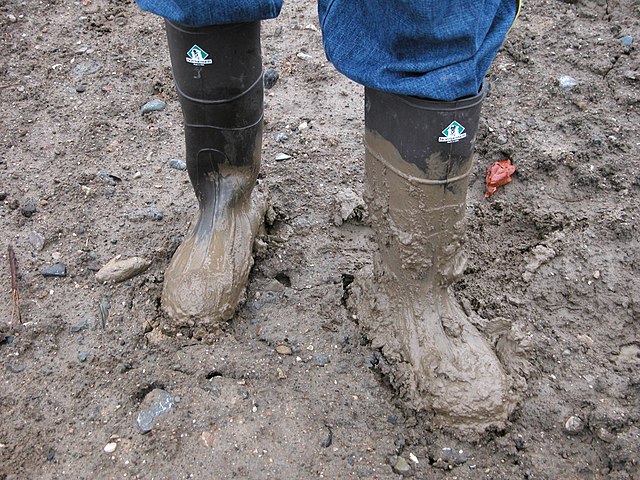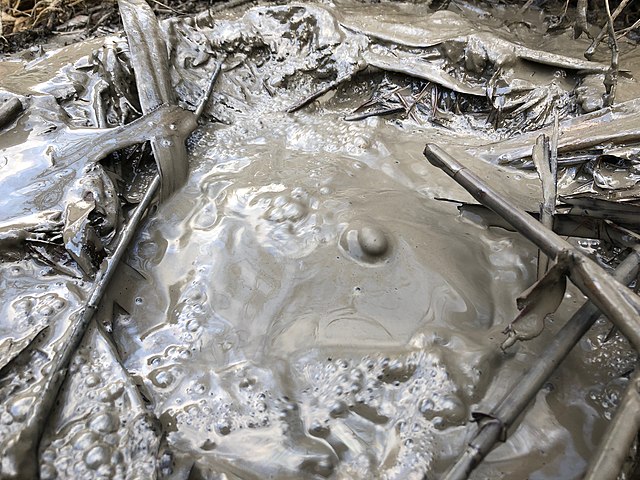A mud volcano or mud dome is a landform created by the eruption of mud or slurries, water and gases. Several geological processes may cause the formation of mud volcanoes. Mud volcanoes are not true igneous volcanoes as they do not produce lava and are not necessarily driven by magmatic activity. Mud volcanoes may range in size from merely 1 or 2 meters high and 1 or 2 meters wide, to 700 meters high and 10 kilometers wide. Smaller mud exudations are sometimes referred to as mud-pots.
Hydrate-bearing sediments, which often are associated with mud volcano activity. Source: USGS, 1996.
On top of Gekpatlawuk mud volcano, Western Turkmenistan
Two mud volcanoes on the Taman Peninsula near Taman Stanitsa, Russia
Akpatlawuk mud volcano, western Turkmenistan
Mud, short for muddle, is loam, silt or clay mixed with water. It is usually formed after rainfall or near water sources. Ancient mud deposits hardened over geological time to form sedimentary rock such as shale or mudstone. When geological deposits of mud are formed in estuaries, the resultant layers are termed bay muds. Mud has also been used for centuries as a construction resource for mostly houses and also used as a binder.
A pair of muddy boots
Gamo mud volcano in Tokamachi, Japan
Mud plastered home in Pakistan
The Arg e Bam citadel in Iran, the largest adobe building in the world








